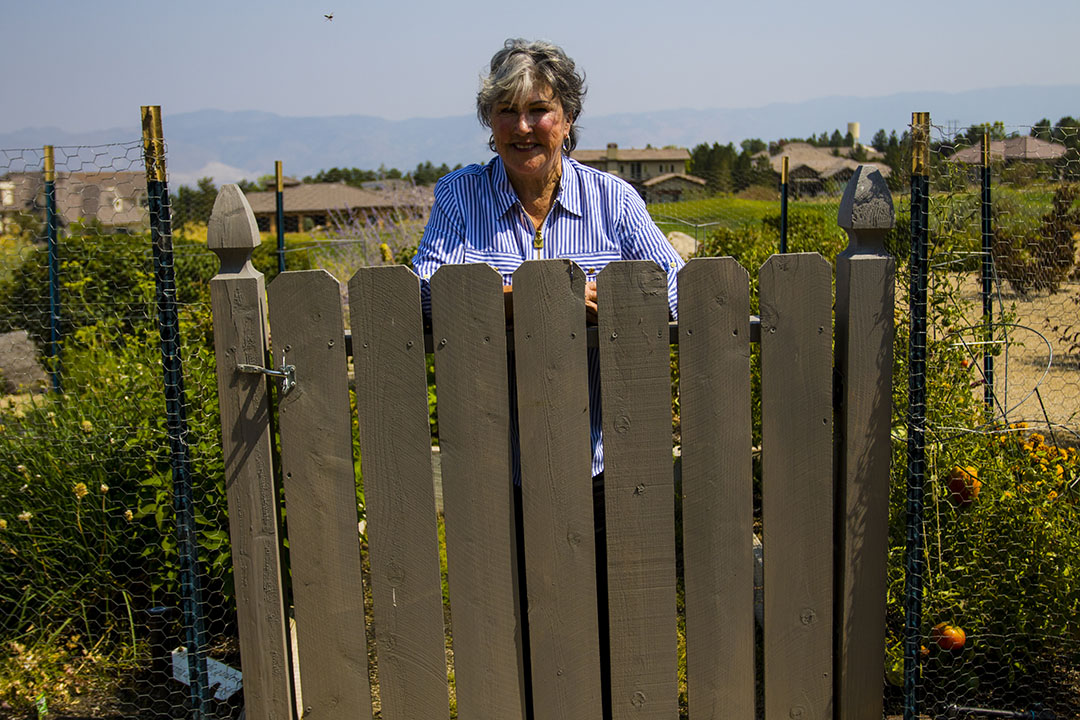Garden club members work with high-desert challenges.
With about 100 members and most likely several hundred years of combined gardening experience, members of The Club at ArrowCreek garden club might be the go-to source for information on growing in the high desert.
While Reno is a challenging area in which to grow vegetables, these gardeners face even trickier issues. Located in the western foothills of Reno, the club members’ gardens are at a higher elevation than those of other Renoites, and the exposed hillsides attract deer, marmots, and other critters. The poor, rocky soil also is a challenge.
Club member Carolyn Dragics has been able to produce a prolific garden at her ArrowCreek home, but not without some wistful, Midwestern dreams.
“We have had people in the club who have come from places with really nice soil,” she says. “I’m from Ohio, so [the growing conditions here are] torture for me.”
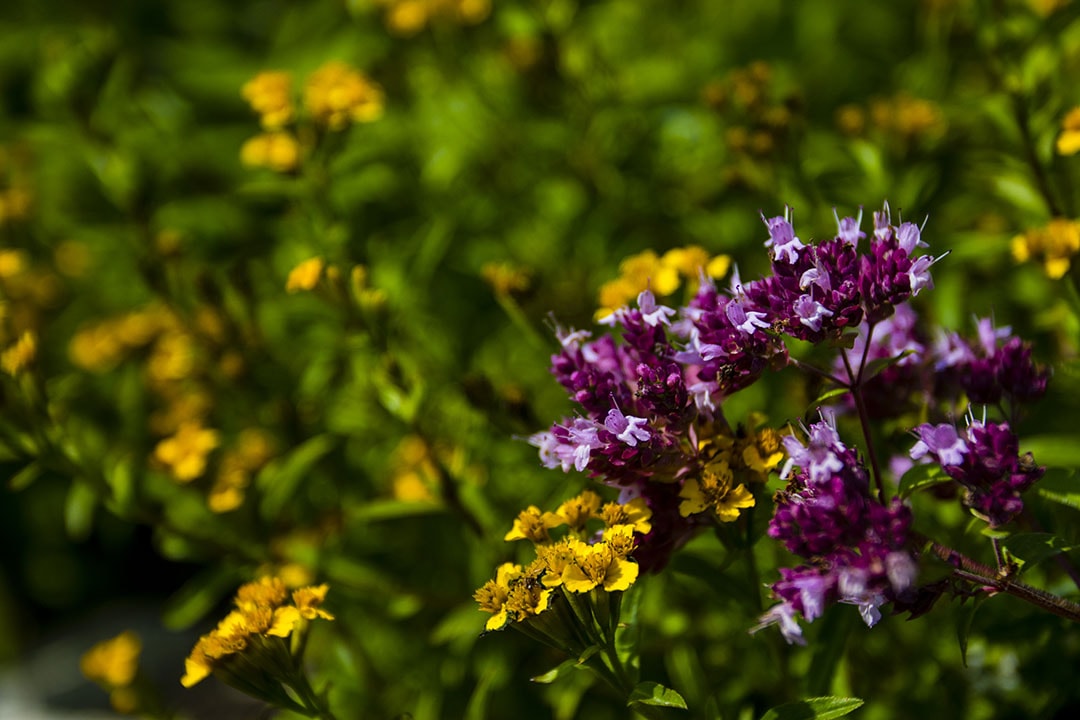
The garden club is open to any member of The Club at ArrowCreek. It’s not only a place for both new and experienced gardeners to meet and discuss horticulture, but Dragics also has spearheaded events such as flower arranging, a summer Mad Hatter party, and a holiday pine cone wreath-building workshop.
While each club member’s garden is unique, some tried and true tips still crop up.
Disciplined for Decades
Kent and Kimberly Wood have lived in Reno for 50 years and have been in ArrowCreek for about 20 of them. Their 3,000-square-foot garden features more than 20 different types of garlic, asparagus, tomatoes, summer squash, sweet corn and popcorn, pole beans, and apple and peach trees.
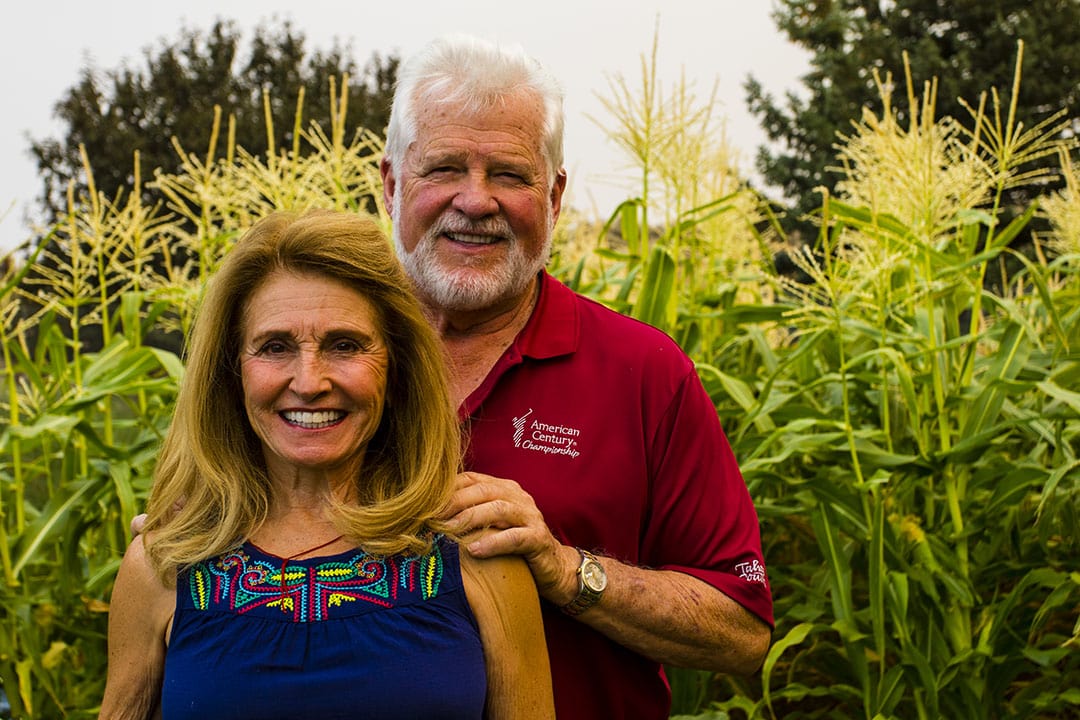
The Woods’ garden is so enviable, it was featured on the club’s garden tour.
“So many people didn’t think you could grow vegetables in our climate and in our poor soil,” Kent says. “They were amazed that we could.”
The Woods like to grow enough produce to eat through the season and have enough to freeze for the winter. Each year the couple adds truckloads of compost delivered by Nevada Organics. They also have installed a tall fence to keep out deer, rabbits, and squirrels.
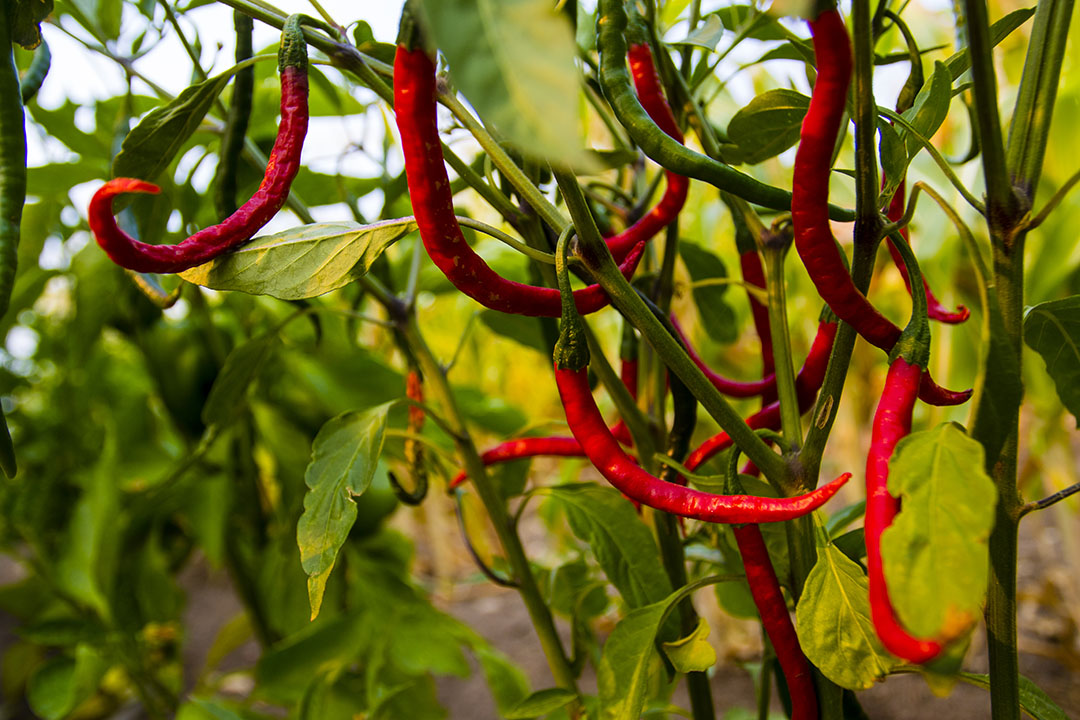
But Kent knows when to say when. With a garden located at 5,300 feet in elevation, he has given up on vegetables that need extremely warm days and nights, such as watermelon and cantaloupe.
His other tips just require a little time and effort.
“Be patient and improve the soil with compost by tilling it in,” he says.
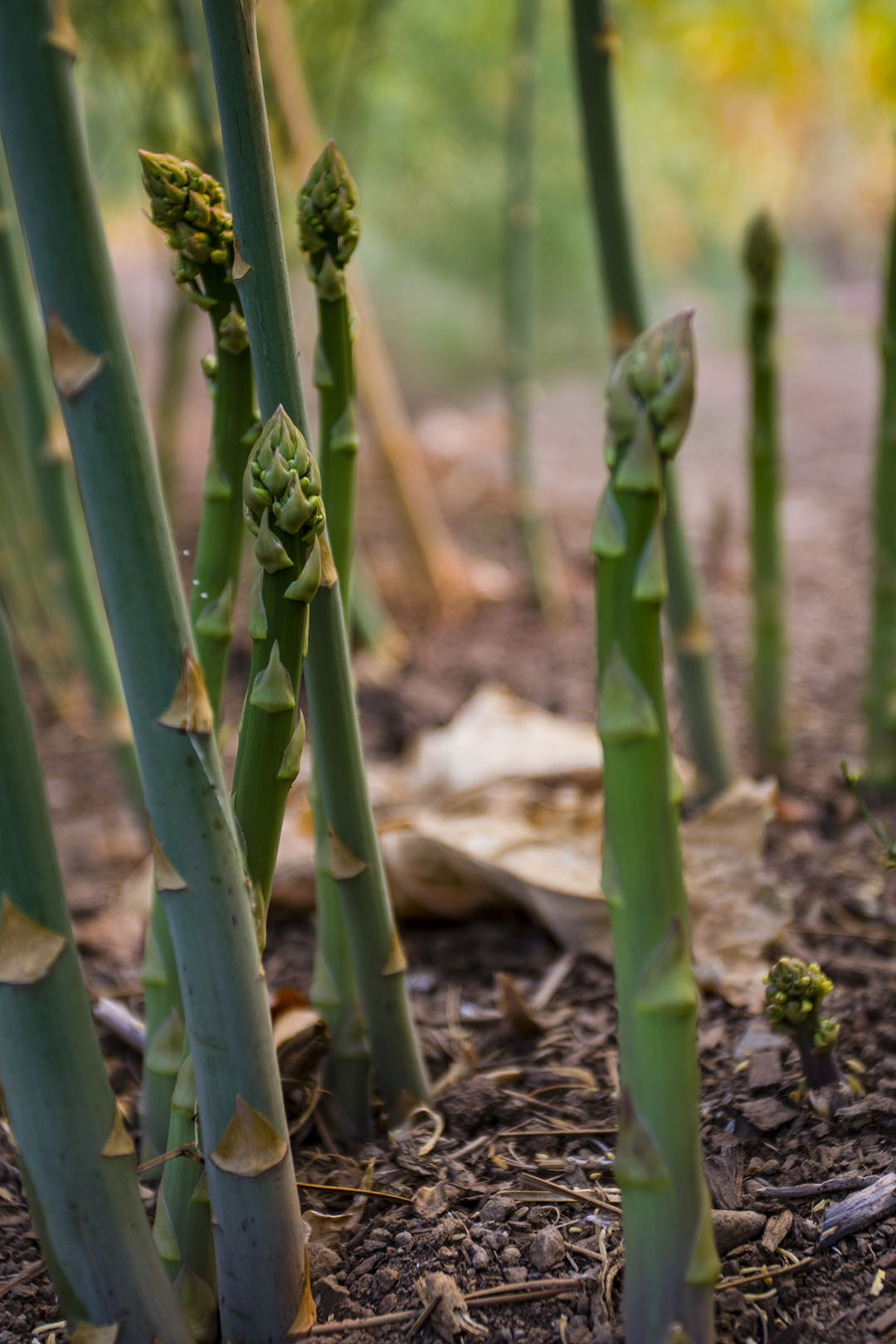
Bringing France to Reno
Jill and Fred Altmann’s garden represents the epitome of patience. The couple not only has a vegetable garden full of strawberries, squash, tomatillos, San Marzano plum tomatoes, and a greenhouse with lime and lemon trees, but also a one-acre vineyard.
The vineyard features a cold-hardy French-American Frontenac grape variety from which the Altmanns produce and bottle their own wine. Over time, the vine roots have become strong enough to withstand Reno’s unpredictable climate.
Jill is a textile artist and grows many of her own fabric dyes, such as marigold, coreopsis, and iris. She also dyes the fabric with leftover beet and carrot tops.
Her tips require not only patience, but also observation of the natural world. She recommends paying close attention to where the sun shines in a garden, watering plants in the evening to avoid evaporation due to high winds, mulching to retain water, and covering plants up against frost or pests.
“Be prepared to spend time with your soil and irrigation system before you even begin to plant,” she says. “Test your soil, and don’t bother to plant anything until you’ve augmented it with good compost.”
She also vetoes the typical Reno adage about waiting for the snow on Peavine to melt before planting.
“I never plant before Memorial Day, and I bring the greenhouse seedlings out about a week ahead of time to harden them up,” she says. “That saying about not planting before the snow is off Peavine … well, that snow could be melted for a month and then we get a snowstorm where you can’t even see Peavine.”
Take It from the Master
Many of the ArrowCreek gardeners may have received their seedlings from Ellen Ewing. This master gardener provides about 400 of them to the garden club each season.
“I think gardening is one of the best therapies in the world,” Ewing says. “It has kept me sane. It is where I get centered, and it never feels like work to me. It’s the love of my life.”
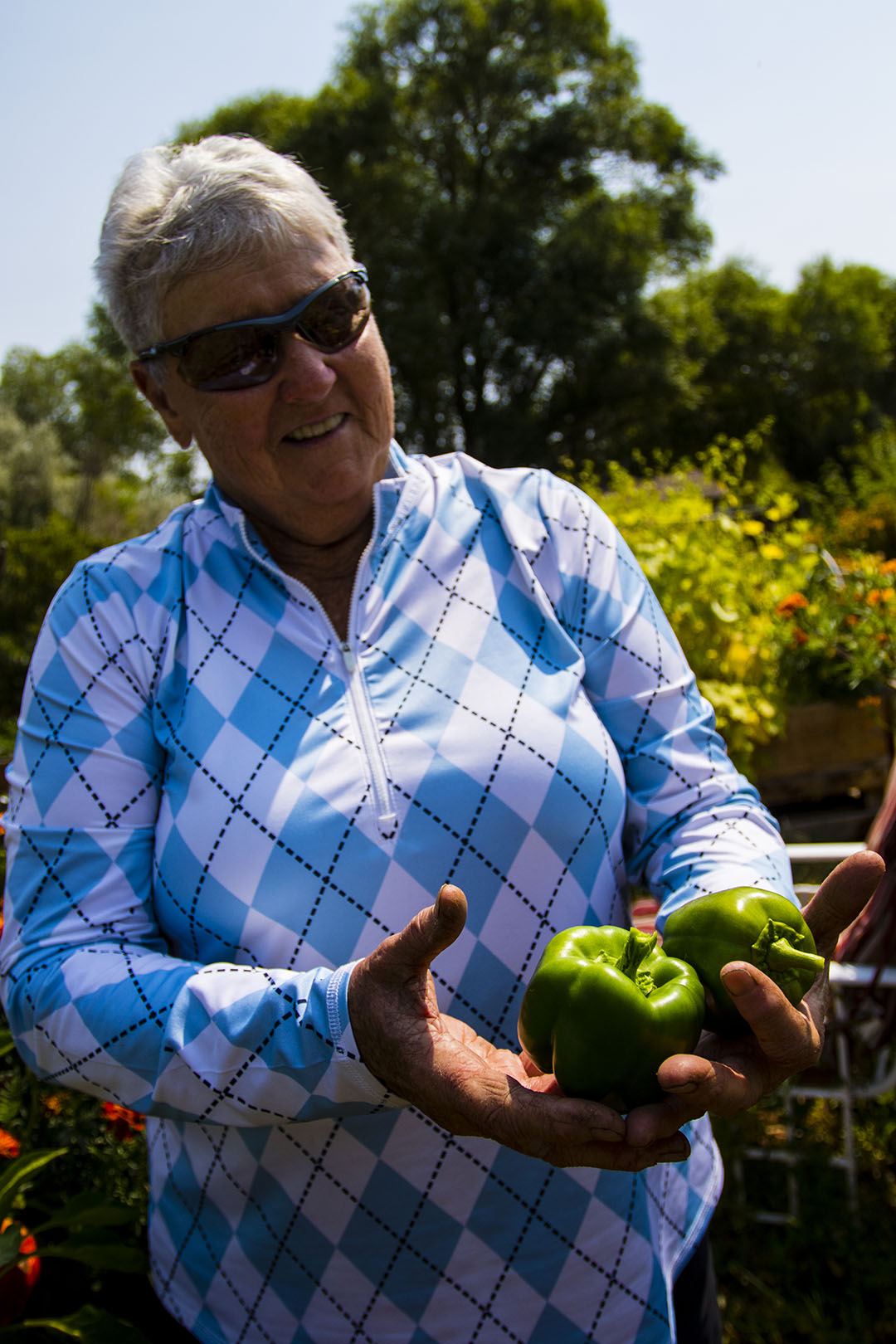
A 22-year resident of the area, Ewing takes a holistic view of gardening. She has 17 raised beds and a greenhouse that produces garlic, onions, leeks, peppers, eggplants, cucumbers, winter and summer squash, and more than 20 varieties of tomatoes. She also has a water feature and grows native plants and perennials such as quince and coneflowers to attract pollinators and birds.
“I grow everything. I have a vegetable basket in my backyard, and it’s really nice to go out there and eat in the garden,” she says. “As for the garden club, I love the companionship, the social aspect of the club, and seeing other people’s gardens and what they do is always fun for me.”
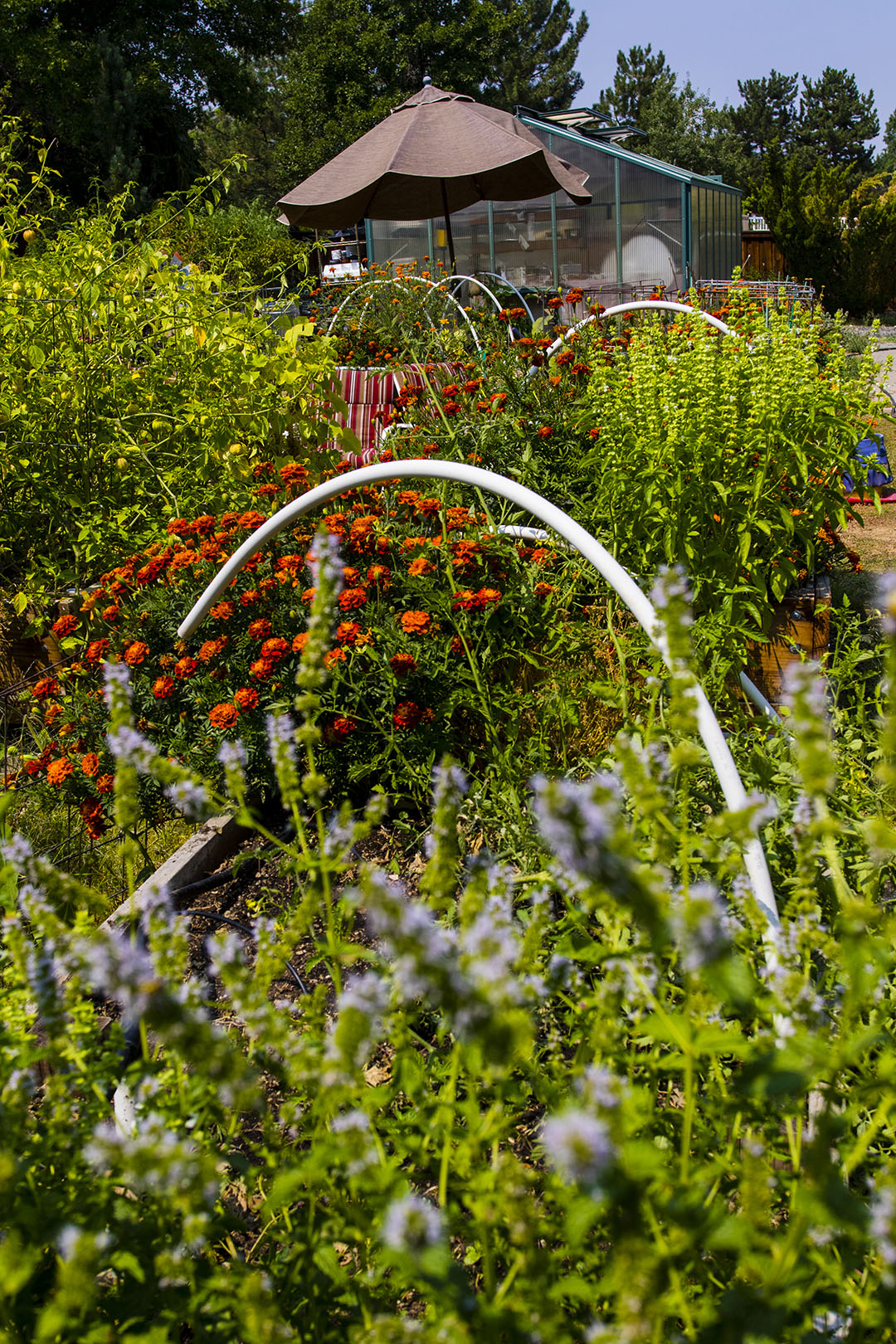
Ewing’s tips reiterate the importance of amending the area’s poor soil. She brings in organic compost and makes her own. She plants the first week of May. To protect and warm up oudoor seedlings, she uses water walls, which are collapsible plastic, water-holding panels that stabilize temperature in the areas they wall off. She also emphasizes the importance of not using any pesticides.
Her final tip is one that any gardener in the Reno-Tahoe area can benefit from — especially if he or she has suffered from a sore back: “It’s really a good idea to stretch before you garden.”
Christina Nellemann gardens in the equally challenging Washoe Valley area and would love to tour each club member’s slice of paradise.
